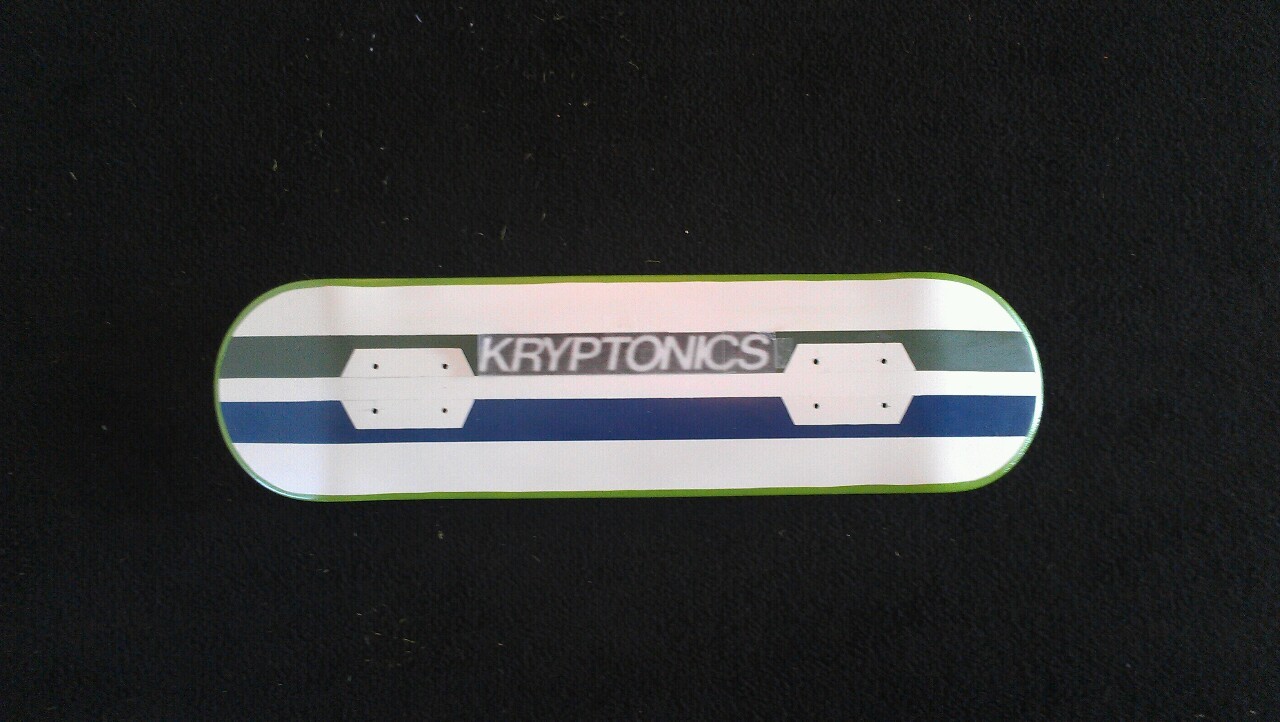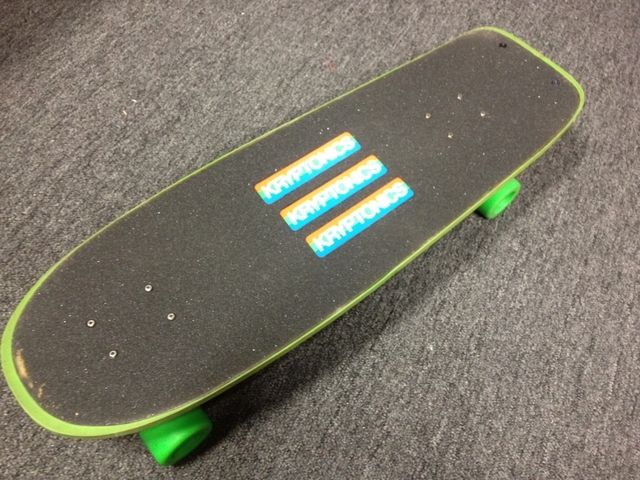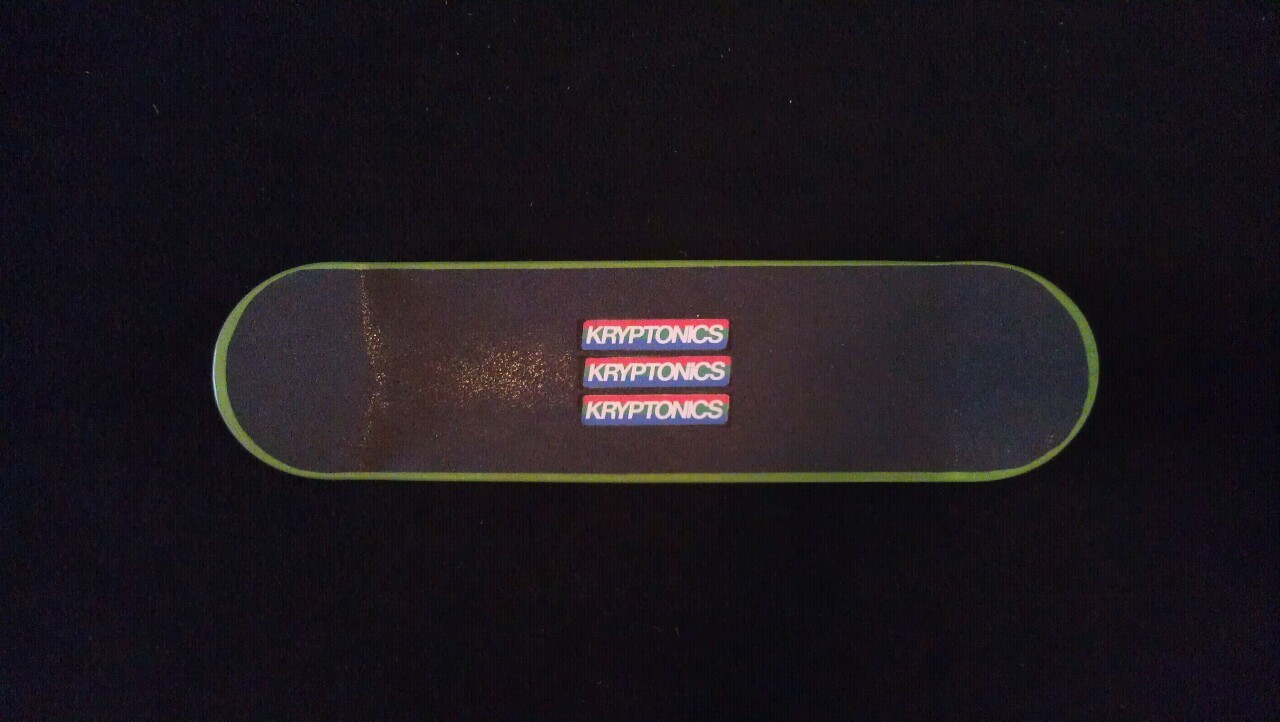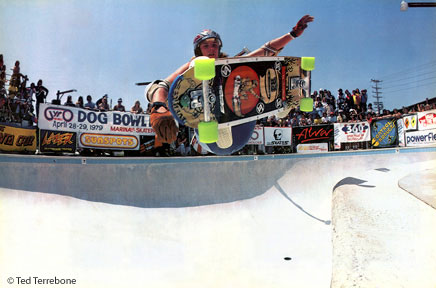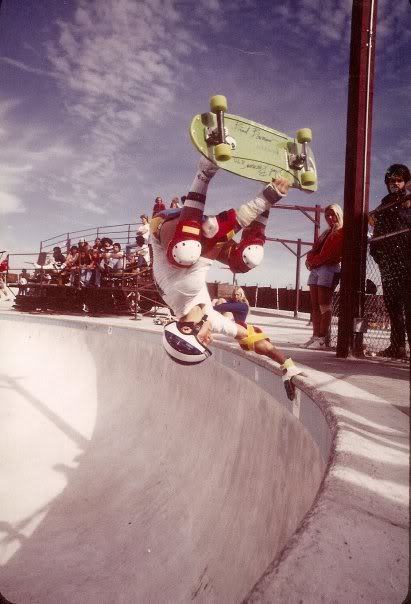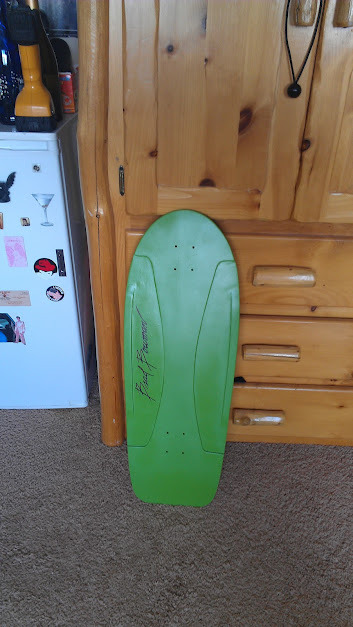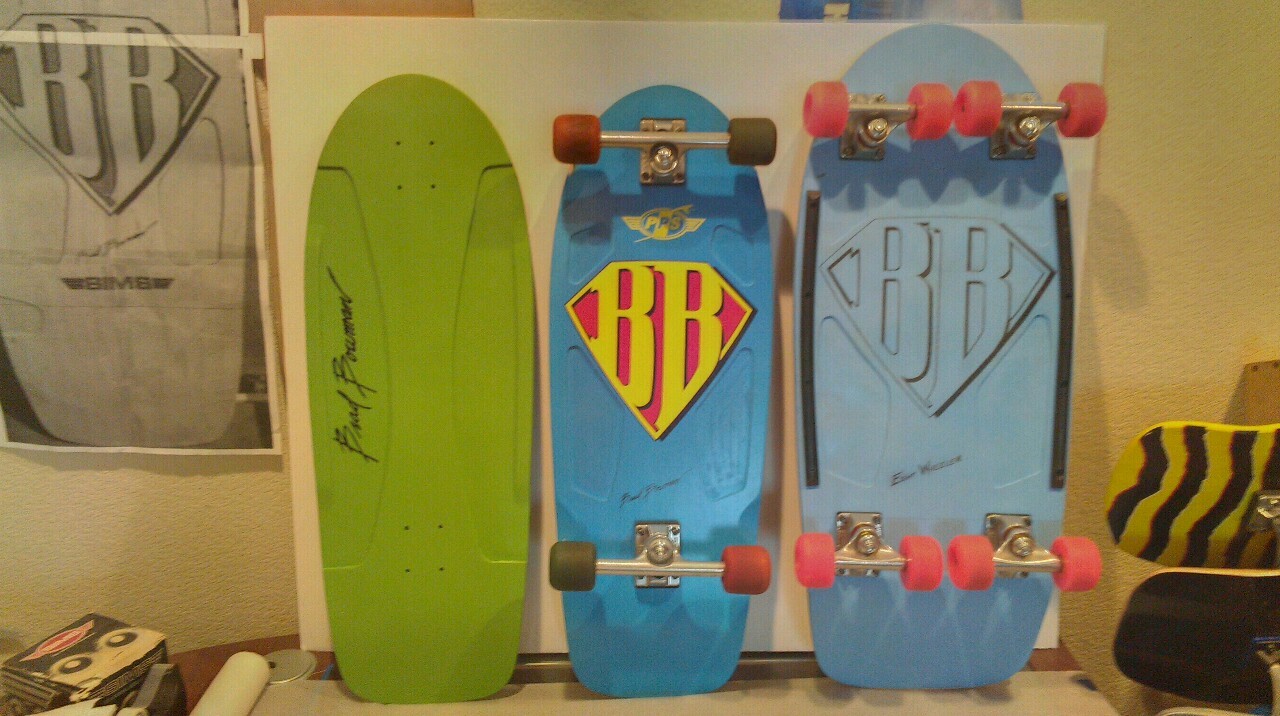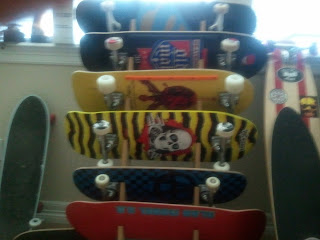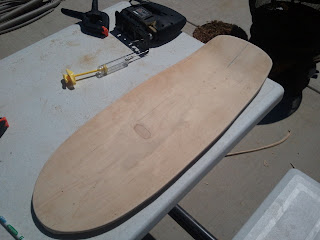One of the best, most fluid skaters of all time was Brad Bowman. I got to see him skate a couple of times at the Hi Roller park in Boulder, Colorado. Bowman along with many others of that time, had a very smooth surf style. These were guys that started out surfing, and then moved on to be great skaters. This style is rarely seen in modern skate times, but was awesome to watch 'back in the day'.
Bowman was also the first guy I ever saw ( in person ) pulling off high ollie airs. He also had one of the coolest boards of the the time. One in the Sims lineup that shaped skating in 1979-1980.
The Superman BB logo was iconic, as was the routes and shape of the board. My friend Richie, skated one in 79, and he was pulling off huge frontside and backside ollies on it. That made me want one even more.
Recently, while I was sketching designs for my "next" build I drew up a couple of ideas for a massive Eight wheeler.
A Bowman Eight Wheeler! That would be so cool. As you can see, I am not an artist, I rough sketch ideas, and then work them down to full size mechanical drawings as they come to life. The sketch was done in my good old paper sketchbook, but now I have switched to doing all my sketches in Autodesk Sketchbook Pro on my Motorolo Xoom android tablet. I can transfer my electronic sketches to my computer where I can then start mechanical drawing using a CAD program on my Ubuntu Linux system.
** Sidebar note. I did the
KBeam build all by hand. No computers involved. It was more an exercise in hand crafting a deck than using technology.
First up on this build was dealing with the size of the deck. At 14" X 34" it is huge. I scoured the planet looking for maple laminate that comes in that width, and did not find any that I wished to pay huge amounts for. Yes, it exists but in small lots it is really expensive. I talked to the guys at
Factory 13 about getting wood from them, and that would not be too costly, I even though about having Danny make the board for me, but in the end, doing the build myself is why I do this, so I opted for another path.
I edge banded 12" or less laminate to create my own 16" wide layers. I staggered the banding widths so no edge band would lay on top of another to maintain strength throughout the board.
Creating a Bowman board, means that I need to not only work on getting the graphic and routes right, but I need to get the exact shape of the original scaled up to the size I need. I use Qcad and Gimp on my linux box to scale images and to build patterns for the build. This is also the last build I am doing using my custom vacuum press system. I am in the process of building a 12 Ton press with interchangeable molds to facilitate better and more exacting deck builds.
I created the mold for the deck, and layed up the edge banded plys, and pressed up the deck. I layed down the shape from the template I made on my computer, and rough cut the shape.
Now that is the Bowman shape! You really can't tell from this picture, but that thing is massive.
Next, from my templates, I laid out the routes for the deck.
To give you an idea of the size and what the final result will become, I set some trucks and wheels on the in-progress deck.
I build a jig, for the routes and carefully removed the routed areas. While the original Bowman deck always came in blue, there were two shades, A dark blue, and a light blue. I always liked the light blue colorway, so I went out looking for a color match.
It is really starting to look like a Bowman deck now. I had just purchased silk screen supplies and a large screen and was planning on doing all the graphics that way, but fate took over. Actually I got fired up to work on the deck, and my paints for the silk screen had not come in the mail yet. So I grabbed up my art supplies and paint brushes and started laying out graphics by hand. First, in pencil to get the layout right.
And, then I grabbed up my paint brush and laid down the black outline.
At this point I was struggling with the Sims logo above the BB. I didnt like the way it was coming out by hand, and I was really getting the itch to ride the board. I also really liked the black outline on the blue background. The more I looked at the deck in this state the more I liked it. I decided to not add the red and yellow to the BB logo, and to change out the Sims logo.
I want through a design session with my friend Morgan Whitney ( an excellent programmer, and graphic designer, and overall talented guy ) Here is a snippet of our design session. This session was entirely done just to try and replace the Sims logo with something that reflected all the elements of the build.
Again, a lot of my builds and designs start with rough sketches. While there were some awesome ideas that came out of this session, I chose to not use any of them, and scrap the logo for a sticker. Just because I was so excited to ride the deck.
As seen in previous photos, I had purchased trucks and wheels for the board. Tracker mid-tracks, and Sims 63's. I drilled up the deck, gripped it, and mounted everything up.
This thing is a beast. Having never rode an eight wheeler before, I had a lot to learn about moving around on a deck that large, but one day at the skatepark was enough to convince me that everybody should have one in their quiver. It is a blast to ride, and a great feeling to hang 7 wheels out over coping!

